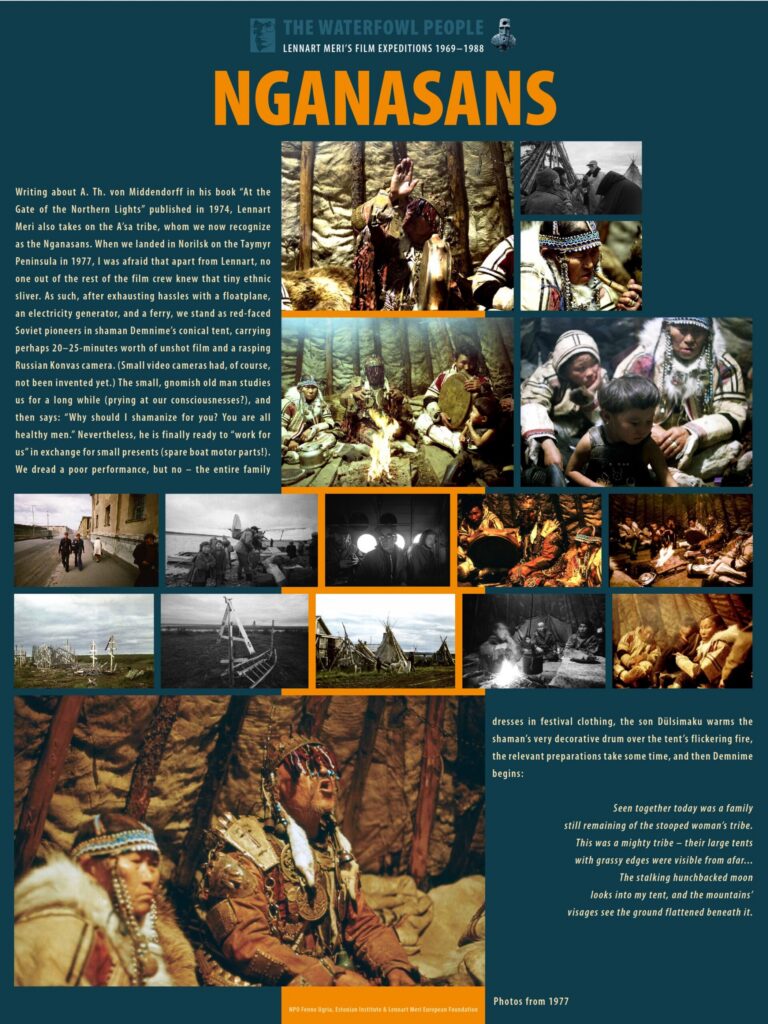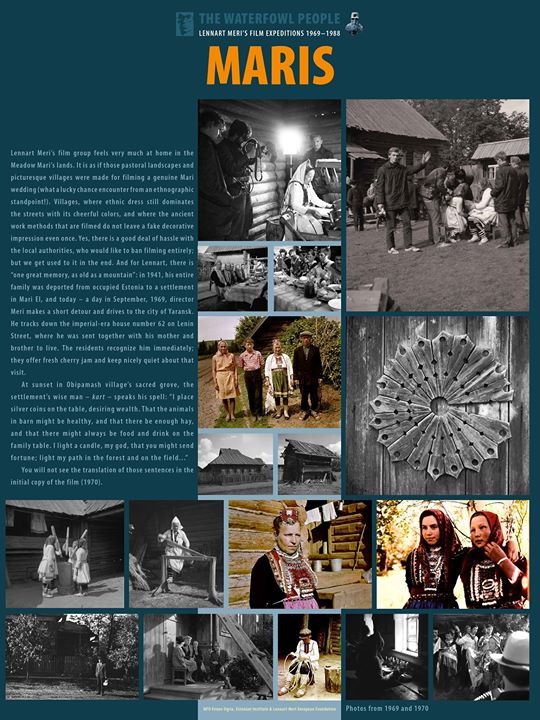An evocative exhibition chronicling the lost worlds and living traditions of Europe’s lesser-known peoples opened at the University of York, the UK, on 8 May, bringing to British audiences the haunting beauty of the Finno-Ugric cultural landscape through the lens of Estonia’s late president and cultural pioneer, Lennart Meri.
Titled The Waterfowl People, the poster exhibition, organised by the Estonia-based Fenno-Ugria Foundation, unspools the remarkable origin stories behind Meri’s ethnographic film trilogy – The Waterfowl People, The Winds of the Milky Way, The Voice of Kaleva and others – that captured the vanishing ways of Finno-Ugric peoples during the latter half of the 20th century.
Preserving the memory of small nations
With visuals curated by renowned Estonian artist Peeter Laurits and deeply personal texts by sound director Enn Säde, who took part in the original expeditions, the exhibition casts new light on a cinematic and anthropological project that spanned two decades and half a continent. Between 1969 and 1988, Meri and his team – composed of ethnographers, folklorists, artists and writers – undertook numerous arduous journeys into the heartlands of the Finno-Ugric world.

Photographs taken during those expeditions, now printed in large format and paired with Säde’s recollections, form the backbone of the exhibition. They tell a story not only of cultural endurance but also of intellectual resistance – preserving the memory of small nations whose languages and traditions were, and remain, under threat.
Today, the Finno-Ugric family comprises peoples as diverse and dispersed as the Hungarians, Finns, Estonians, Komi, Udmurts, Mari, Khanty and Mansi. While Hungary, Finland and Estonia are sovereign nations, most Finno-Ugric peoples live within the borders of the Russian Federation, often in remote republics or autonomous regions. Their languages are unrelated to Indo-European tongues, forming a distinct branch of the Uralic language family.

In Estonia, the Finno-Ugric Day, held annually on the third weekend of October, has been marked as a national day of significance since 2011 – a symbolic nod to shared linguistic roots and cultural bonds. It is a moment of reflection and solidarity, not only with those who speak the kindred tongues but also with the idea of Europe as a mosaic of large and small nations alike.
Quiet acts of defiance
Meri’s films, long revered in Estonia as visionary ethnographic documents, did more than depict disappearing rituals – they dignified them. At a time when Moscow discouraged minority expressions of identity, the films became quiet acts of defiance, using art to outlast politics.

Meri’s film career came to an end when he entered politics – first as foreign minister in Estonia’s transitional government from 1990-1992, and then as president of the Republic of Estonia that had just restored its independence. He served as president from 1992 until 2001, remembered not only for his statecraft but for his lifelong commitment to Estonia’s cultural memory.
The University of York, located in the historic city of York, England, is a member of the prestigious Russell Group, which represents 24 leading UK universities committed to maintaining the highest research and teaching standards. It is ranked 146th in the Times Higher Education World University Rankings 2025.

